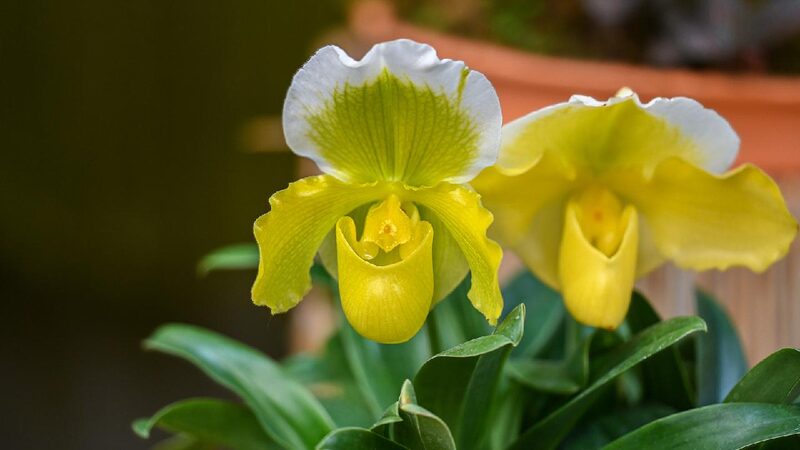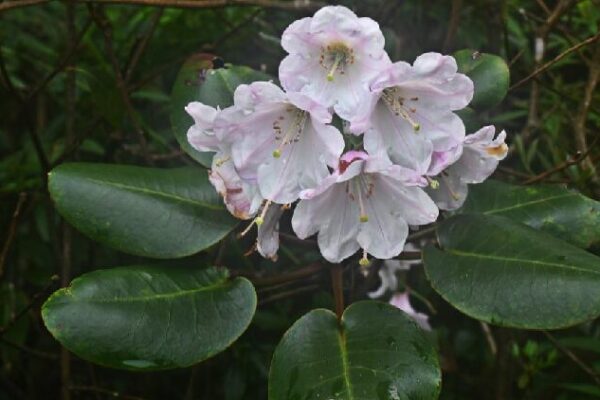In the early 1880s, a mysterious and beautiful flower was discovered on a cliff in Guangdong Province, south China. Named Primulina tabacum, this rare plant captivated botanists with its delicate appearance. However, after its initial discovery, it seemed to vanish, and for over a century, no one saw it again. Many believed it had become extinct.
It wasn’t until the 1990s that Primulina tabacum was rediscovered in Guangdong. At that time, only three surviving plants were found, earning it the classification of critically endangered. This species thrives in specific microhabitats within karst caves, but its survival has faced severe threats due to environmental changes and human activities.
In 2002, researchers from the South China Botanical Garden (SCBG) of the Chinese Academy of Sciences launched an ex-situ conservation program for Primulina tabacum. Using advanced cloning technology, scientists mastered rapid propagation techniques for the plant, successfully cultivating it in larger numbers. They reintroduced about 3,000 individuals back into the wild, giving this rare flower a new lease on life.
Currently, the SCBG has conserved 1,050 rare and endangered plant species, including 558 state-protected wild plants. Their dedicated rare and endangered plant breeding center spans 20 hectares and houses over 230 such species, making it one of China’s largest germplasm banks for rare flora. The botanical garden aims to ensure effective protection of 95 percent of south China’s rare and endangered plants and to reintroduce 20 species into their natural habitats.
Traditionally, documenting and studying biodiversity relied heavily on experts. Now, big data and artificial intelligence (AI) technologies are changing the game. Through an independently developed intelligent specimen management system named Cathaya, the herbarium in 2024 completed the reception of over 50,000 plant specimens. They uploaded 300,000 pieces of spatiotemporal distribution information concerning the collected specimens, and more than 250,000 pieces of specimen data were shared via the system. This system has enabled efficient management of the entire process from field investigation to digital sharing of specimens, setting a new paradigm for biodiversity research and intelligent management.
The herbarium also developed the “BioGrid” app, a biodiversity observation and identification tool using large-scale scientific data and AI. This app addresses challenges such as precise plant localization and species identification, enhancing data collection and species recognition capabilities for both professionals and the public. It provides data collection, project organization, data perception, and visualization services for professionals while also enabling the public to conveniently participate in biodiversity science projects.
As a key participant in global ecological conservation, China continues to explore innovative approaches to biodiversity protection and ecosystem management. Dinghushan National Nature Reserve, a model of ecological conservation in China, is not only the country’s first nature reserve but also an important member of UNESCO’s World Network of Biosphere Reserves. Its successful experience offers valuable lessons for global ecological conservation.
Located in Guangdong’s Zhaoqing City, the 1,133-hectare reserve was established in 1956 and is managed by the SCBG. It’s hailed as the “Green Pearl on the Tropic of Cancer Desert Belt” due to its exceptional ecological value and striking contrast with the typically arid regions along the Tropic of Cancer. In 1979, it became one of China’s first three biosphere reserves under UNESCO’s Man and the Biosphere program.
The primary focus of the reserve is protecting South Asian subtropical evergreen broad-leaved forests and their wildlife. Forest coverage in the reserve has remained around 98 percent, with 68 state-protected plant species and 73 protected animal species found there. Populations of key protected species have either remained stable or increased significantly, while the area of subtropical evergreen broad-leaved forests has grown by over 70 percent since the reserve’s establishment.
Based on nearly two decades of investigation, researchers have found that previous estimates, relying primarily on forest above-ground biomass and surface water in carbonate rock regions, have led to a significant underestimation of China’s terrestrial carbon sequestration capacity—by as much as 50 percent. The study further reveals that terrestrial carbon sinks across China are highly sensitive to regional environmental variability.
Scientists have also assessed the current state and temporal dynamics of carbon sequestration in China’s forest ecosystems, providing estimates of forest carbon stocks and revealing considerable remaining sequestration potential. In examining ecosystem responses to global change, they have identified the mechanistic pathways through which nitrogen deposition modulates soil carbon emissions in tropical forests and have further elucidated the biogeochemical cycles of carbon, nitrogen, and phosphorus under climate warming.
The Dinghushan research station collaborates with research institutions in over 20 countries, including the United States, Australia, Canada, Germany, France, Sweden, Denmark, Japan, and Kenya, advancing multiple ecological studies.
Reference(s):
Sci-tech helps protect south China biological treasure trove
cgtn.com








